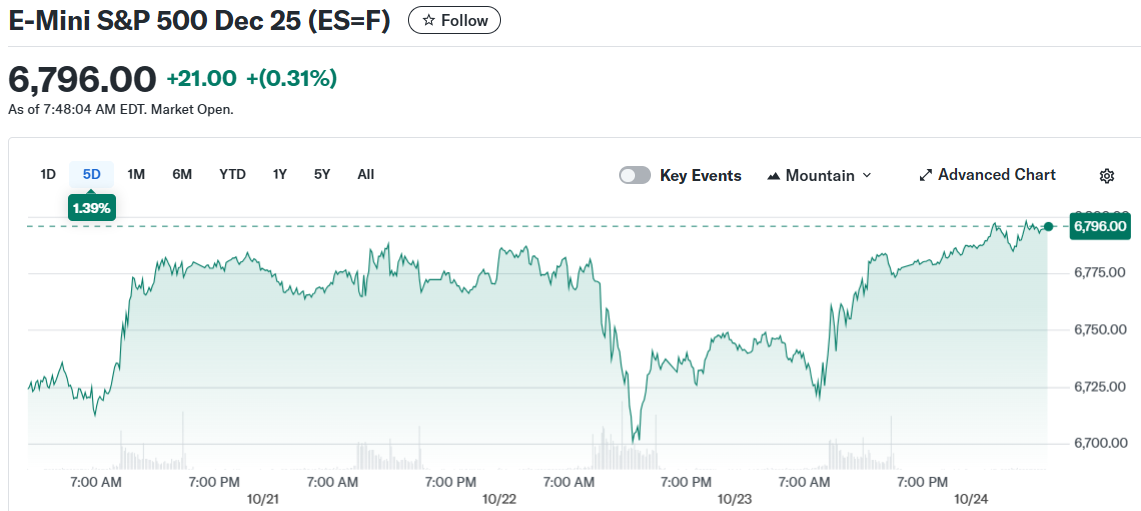TLDR
- September CPI inflation expected to reach 3.1% year-over-year, up from 2.9% in August, marking the first time above 3% in 2025
- The report was delayed by the ongoing government shutdown, now the second-longest in US history
- Core CPI inflation projected at 3.1% annually with a 0.3% monthly increase
- Federal Reserve still expected to cut interest rates by 0.25% at October 28-29 meeting despite inflation uptick
- Used car prices and shelter costs may show moderation in September data
The Bureau of Labor Statistics released September’s Consumer Price Index on Friday morning after delays caused by the ongoing government shutdown. This marks the first economic data release since the shutdown began.
Economists surveyed by FactSet predicted overall inflation would reach 3.1% year-over-year in September. This represents an increase from August’s 2.9% rate. The monthly increase was expected to hold steady at 0.4%, matching August’s pace.
The September reading would mark the first time headline CPI inflation exceeded 3% since the start of 2025. The Federal Reserve maintains a target inflation rate of 2%. Despite the uptick, current projections remain well below earlier fears of 3.5% year-over-year growth.
Core CPI inflation, which excludes food and energy prices, was forecast to show 3.1% annual growth. Monthly core inflation was expected at 0.3%, unchanged from August. This measure helps policymakers understand underlying price trends without volatile components.
Used Car and Shelter Prices
Bank of America Securities economist Stephen Juneau predicted core goods inflation would moderate slightly in September. He expected used car prices to pull back, contributing to a 0.1% monthly increase in core goods. This would represent a slowdown from August’s 0.3% monthly pace.
Shelter costs may also provide relief in the September data. Nomura economist David Seif noted that rent inflation in small cities tends to be more volatile than large metros. He attributed August’s 0.4% monthly shelter increase to temporary factors in southern small cities.
The government shutdown created unique circumstances for this data release. The Social Security Administration requires third-quarter CPI data to calculate cost of living adjustments for benefits. Because of this legal requirement, furloughed BLS staff were called back specifically to produce the September report.
President Trump announced Friday he would cancel trade talks with Canada. He cited a Canadian advertisement against his tariff plan that featured former President Ronald Reagan’s voice. This added fresh uncertainty to trade negotiations.
Federal Reserve Rate Cuts
The Federal Reserve is widely expected to cut interest rates by 0.25 percentage points at its October 28-29 meeting. Weaker labor market conditions have become the primary focus for policymakers. Stalled hiring momentum supports the case for continued rate cuts.
Intel shares jumped 8% in premarket trading Friday after reporting third-quarter revenue above Wall Street estimates. The chip maker’s performance fueled optimism in the semiconductor sector. Intel’s head of investor relations John Pitzer said the company is well-positioned for AI applications.

Stock futures climbed Friday morning ahead of the CPI release. Dow Jones Industrial Average futures rose 0.1%. S&P 500 futures gained 0.3% while Nasdaq 100 futures added 0.5%.
The ongoing government shutdown may complicate future economic data. The 16-day shutdown in 2013 resulted in a smaller sample size for CPI calculations, about 75% of normal. October’s inflation data could face similar accuracy issues if the shutdown continues.
Tariffs have had a more muted impact on inflation than initially feared. Principal Asset Management chief global strategist Seema Shah attributed this to margin compression, inventory frontloading, and trade diversion. These factors helped absorb some price pressures from import duties.
The December Federal Reserve meeting faces potential complications from incomplete economic data. If the shutdown affects October CPI reliability, some Fed officials may prefer to pause rate cuts. This would allow more time to assess economic conditions with better information.






